Xun Jiang
EmoAgent: Assessing and Safeguarding Human-AI Interaction for Mental Health Safety
Apr 13, 2025Abstract:The rise of LLM-driven AI characters raises safety concerns, particularly for vulnerable human users with psychological disorders. To address these risks, we propose EmoAgent, a multi-agent AI framework designed to evaluate and mitigate mental health hazards in human-AI interactions. EmoAgent comprises two components: EmoEval simulates virtual users, including those portraying mentally vulnerable individuals, to assess mental health changes before and after interactions with AI characters. It uses clinically proven psychological and psychiatric assessment tools (PHQ-9, PDI, PANSS) to evaluate mental risks induced by LLM. EmoGuard serves as an intermediary, monitoring users' mental status, predicting potential harm, and providing corrective feedback to mitigate risks. Experiments conducted in popular character-based chatbots show that emotionally engaging dialogues can lead to psychological deterioration in vulnerable users, with mental state deterioration in more than 34.4% of the simulations. EmoGuard significantly reduces these deterioration rates, underscoring its role in ensuring safer AI-human interactions. Our code is available at: https://github.com/1akaman/EmoAgent
Long Term Memory: The Foundation of AI Self-Evolution
Oct 21, 2024



Abstract:Large language models (LLMs) like GPTs, trained on vast datasets, have demonstrated impressive capabilities in language understanding, reasoning, and planning, achieving human-level performance in various tasks. Most studies focus on enhancing these models by training on ever-larger datasets to build more powerful foundation models. While training stronger models is important, enabling models to evolve during inference is equally crucial, a process we refer to as AI self-evolution. Unlike large-scale training, self-evolution may rely on limited data or interactions. Inspired by the columnar organization of the human cerebral cortex, we hypothesize that AI models could develop cognitive abilities and build internal representations through iterative interactions with their environment. To achieve this, models need long-term memory (LTM) to store and manage processed interaction data. LTM supports self-evolution by representing diverse experiences across environments and agents. In this report, we explore AI self-evolution and its potential to enhance models during inference. We examine LTM's role in lifelong learning, allowing models to evolve based on accumulated interactions. We outline the structure of LTM and the systems needed for effective data retention and representation. We also classify approaches for building personalized models with LTM data and show how these models achieve self-evolution through interaction. Using LTM, our multi-agent framework OMNE achieved first place on the GAIA benchmark, demonstrating LTM's potential for AI self-evolution. Finally, we present a roadmap for future research, emphasizing the importance of LTM for advancing AI technology and its practical applications.
MDD-5k: A New Diagnostic Conversation Dataset for Mental Disorders Synthesized via Neuro-Symbolic LLM Agents
Aug 22, 2024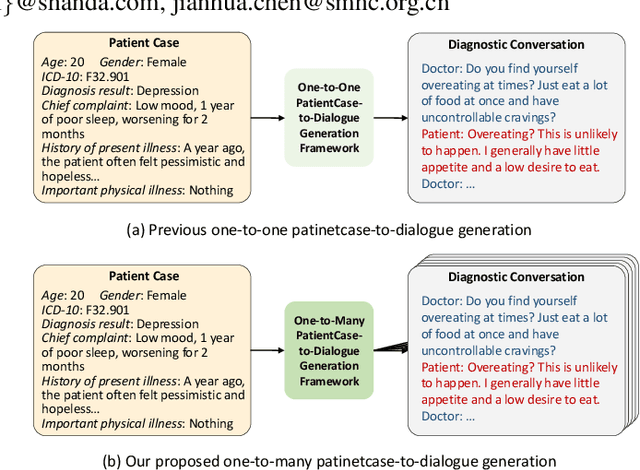

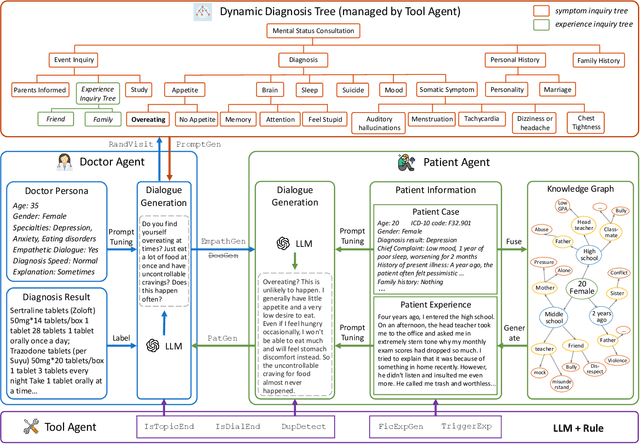

Abstract:The clinical diagnosis of most mental disorders primarily relies on the conversations between psychiatrist and patient. The creation of such diagnostic conversation datasets is promising to boost the AI mental healthcare community. However, directly collecting the conversations in real diagnosis scenarios is near impossible due to stringent privacy and ethical considerations. To address this issue, we seek to synthesize diagnostic conversation by exploiting anonymous patient cases that are easier to access. Specifically, we design a neuro-symbolic multi-agent framework for synthesizing the diagnostic conversation of mental disorders with large language models. It takes patient case as input and is capable of generating multiple diverse conversations with one single patient case. The framework basically involves the interaction between a doctor agent and a patient agent, and achieves text generation under symbolic control via a dynamic diagnosis tree from a tool agent. By applying the proposed framework, we develop the largest Chinese mental disorders diagnosis dataset MDD-5k, which is built upon 1000 cleaned real patient cases by cooperating with a pioneering psychiatric hospital, and contains 5000 high-quality long conversations with diagnosis results as labels. To the best of our knowledge, it's also the first labelled Chinese mental disorders diagnosis dataset. Human evaluation demonstrates the proposed MDD-5k dataset successfully simulates human-like diagnostic process of mental disorders. The dataset and code will become publicly accessible in https://github.com/lemonsis/MDD-5k.
PDNNet: PDN-Aware GNN-CNN Heterogeneous Network for Dynamic IR Drop Prediction
Mar 27, 2024
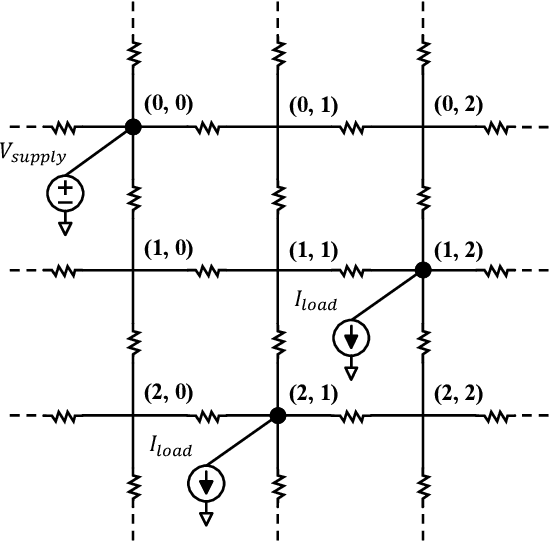
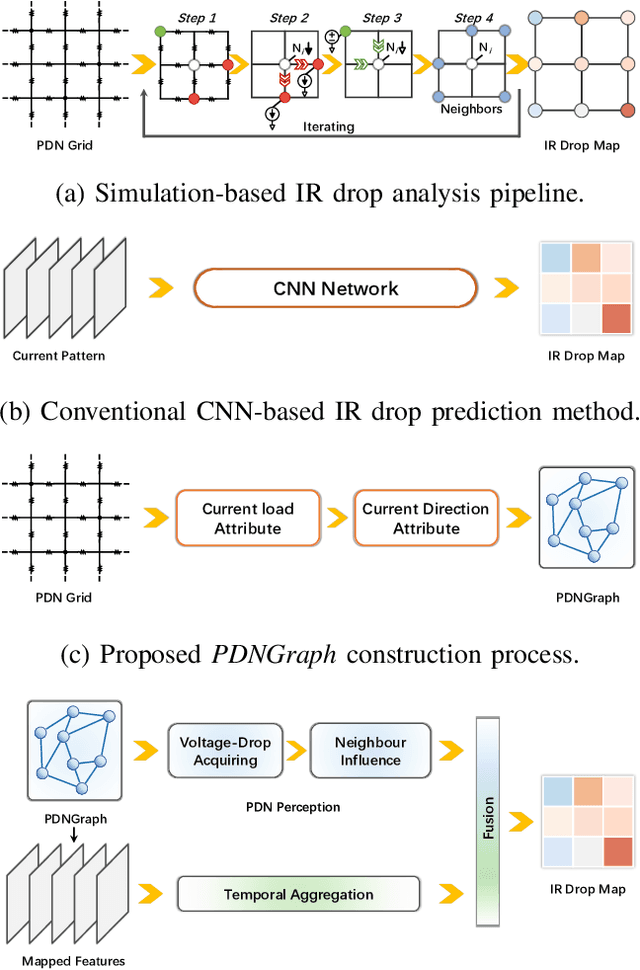

Abstract:IR drop on the power delivery network (PDN) is closely related to PDN's configuration and cell current consumption. As the integrated circuit (IC) design is growing larger, dynamic IR drop simulation becomes computationally unaffordable and machine learning based IR drop prediction has been explored as a promising solution. Although CNN-based methods have been adapted to IR drop prediction task in several works, the shortcomings of overlooking PDN configuration is non-negligible. In this paper, we consider not only how to properly represent cell-PDN relation, but also how to model IR drop following its physical nature in the feature aggregation procedure. Thus, we propose a novel graph structure, PDNGraph, to unify the representations of the PDN structure and the fine-grained cell-PDN relation. We further propose a dual-branch heterogeneous network, PDNNet, incorporating two parallel GNN-CNN branches to favorably capture the above features during the learning process. Several key designs are presented to make the dynamic IR drop prediction highly effective and interpretable. We are the first work to apply graph structure to deep-learning based dynamic IR drop prediction method. Experiments show that PDNNet outperforms the state-of-the-art CNN-based methods by up to 39.3% reduction in prediction error and achieves 545x speedup compared to the commercial tool, which demonstrates the superiority of our method.
Faster Video Moment Retrieval with Point-Level Supervision
May 23, 2023


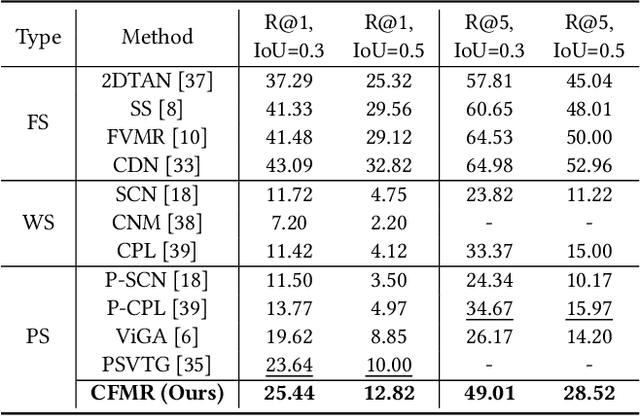
Abstract:Video Moment Retrieval (VMR) aims at retrieving the most relevant events from an untrimmed video with natural language queries. Existing VMR methods suffer from two defects: (1) massive expensive temporal annotations are required to obtain satisfying performance; (2) complicated cross-modal interaction modules are deployed, which lead to high computational cost and low efficiency for the retrieval process. To address these issues, we propose a novel method termed Cheaper and Faster Moment Retrieval (CFMR), which well balances the retrieval accuracy, efficiency, and annotation cost for VMR. Specifically, our proposed CFMR method learns from point-level supervision where each annotation is a single frame randomly located within the target moment. It is 6 times cheaper than the conventional annotations of event boundaries. Furthermore, we also design a concept-based multimodal alignment mechanism to bypass the usage of cross-modal interaction modules during the inference process, remarkably improving retrieval efficiency. The experimental results on three widely used VMR benchmarks demonstrate the proposed CFMR method establishes new state-of-the-art with point-level supervision. Moreover, it significantly accelerates the retrieval speed with more than 100 times FLOPs compared to existing approaches with point-level supervision.
 Add to Chrome
Add to Chrome Add to Firefox
Add to Firefox Add to Edge
Add to Edge